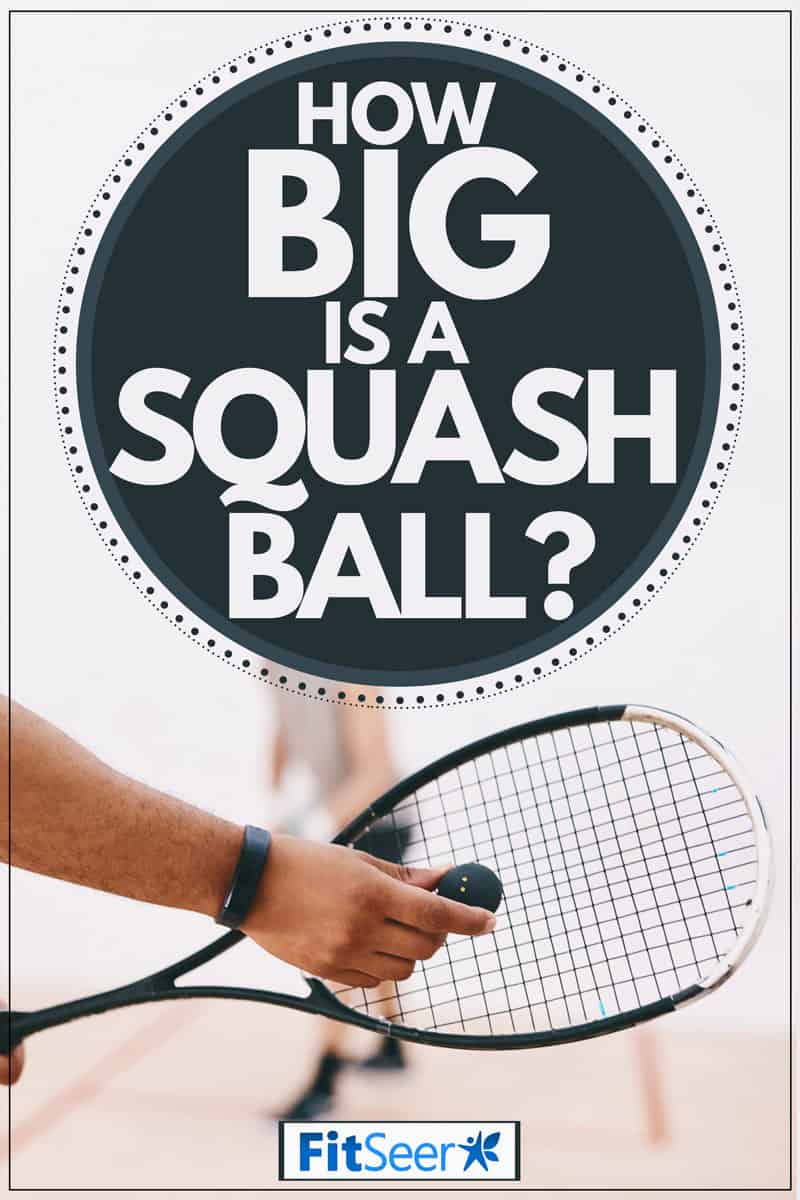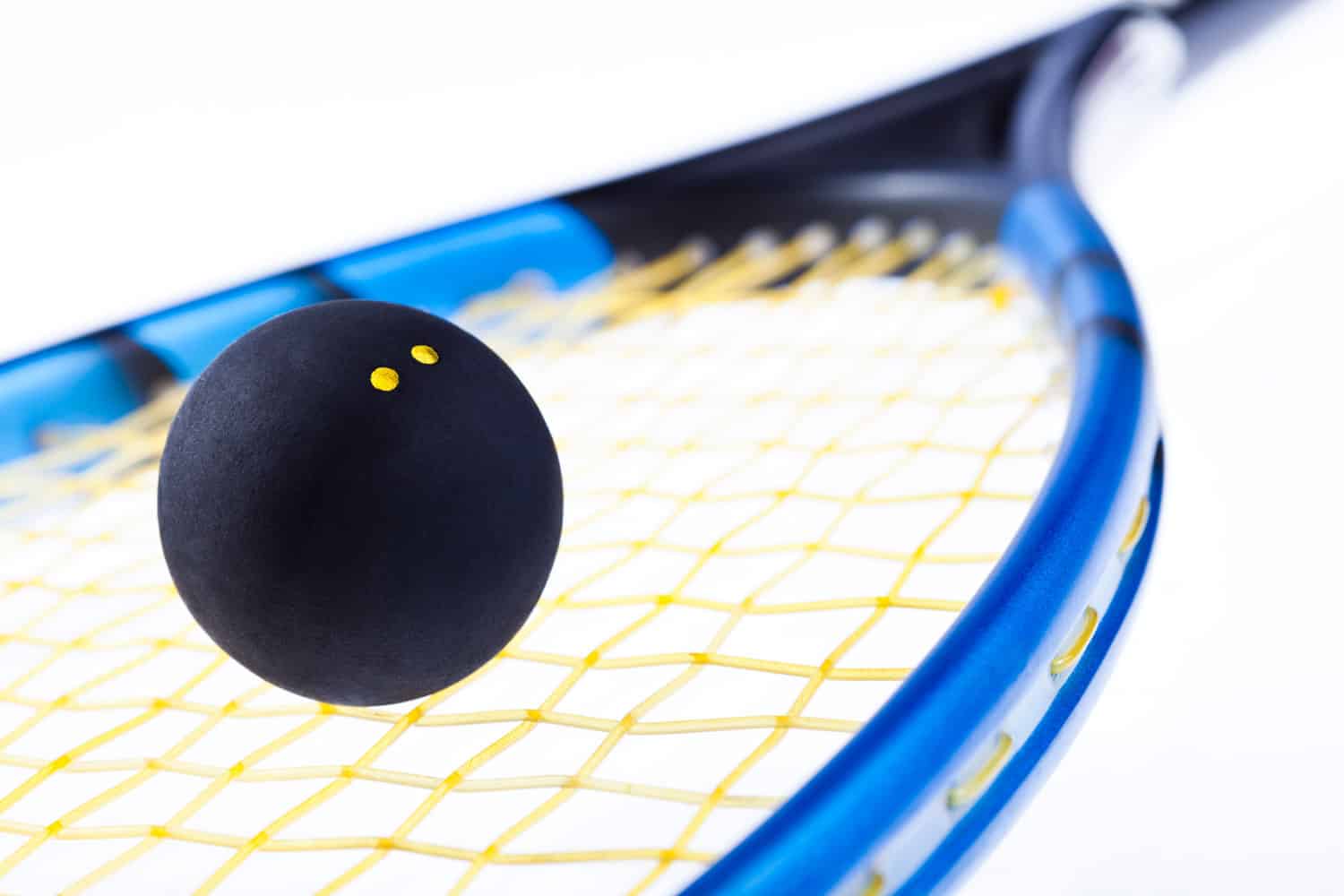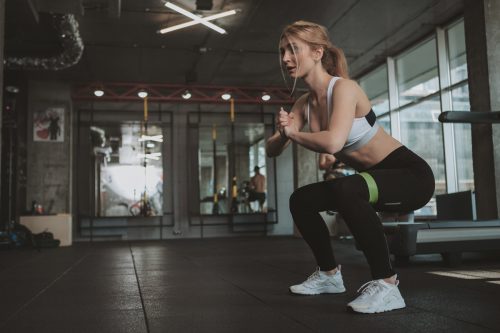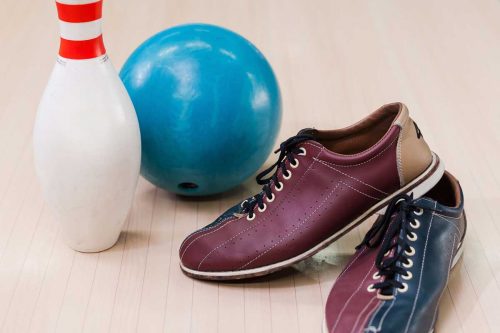If you're thinking about playing squash, you need to play with the correct ball. The size of a squash ball is dependent on several factors, and we've researched how to choose the right size for your skill level.
The size of a junior or adult squash ball can range from 39.5 to 40.5 millimeters and weighs between 23 and 25 grams. This is just a little smaller than a golf ball. A squash ball's size is not as important as the color code that dictates the amount of bounce, speed, and hang time. Young children under seven can use a ball closer to 60 millimeters that looks more like a tennis ball and has more bounce than other squash balls.
Please keep reading, as we will talk about the factors that determine the size of a squash ball. You will learn about squash balls for beginners to professionals. We will also tell you how long a squash ball lasts and whether or not a squash ball goes bad.

Squash Ball Size Vs. Color Code
Now that you know the squash ball size range, it helps to understand that size is not as important as the color code. Different manufacturers can make slightly different sizes that fall into the same color code. This color will tell you if the ball is meant for a beginner, improver, intermediate, or advanced.
You may notice professional players using a double yellow dot. Beginners will have a very difficult time trying to learn with this squash ball. It has to do with the size, the speed, and the amount of bounce. We will discuss all of the color codes next, so you can pick the best squash ball for your skill level.
What Are The Different Squash Ball Color Codes?
There are five primary squash ball types:
- blue dot
- red dot
- green dot
- yellow dot
- double yellow dot

The blue dot ball is for juniors and beginners because it is faster, has greater hang time, and bounces more than the other options. A ball with more speed sounds like it would be for advanced players, but it's actually the opposite. Balls that have more bounce require less strength when hitting the ball.
The red dot ball is also for beginners, but with a little more practice. This ball has slightly less bounce and is slightly slower than the blue dot ball.
Green dot squash balls are for intermediate players.
Yellow dot balls are for advanced, and double yellow dots are for professional squash players in tournaments.
Which Squash Ball Bounces The Most?
The blue dot ball is meant for beginners and bounces most of the standard squash balls. Some companies create alternate balls for young squash players under seven years old. These balls may be more like tennis balls rather than the typical rubber squash balls. This version of a squash ball bounces even more than the blue dot ball and is larger to get children accustomed to playing the game. Once you get more advanced, you will want to move to a ball with less bounce and speed.
How Much Does A Squash Ball Weigh?
A squash ball weighs between 23 and 25 grams or between .8 ounces and .9 ounces. The squash ball weight range falls into the same weight range as a pickleball. The weight of the squash ball can vary slightly between manufacturers for the same color code. The color code is the most important thing to consider when making a purchase because it is based on your personal skill level.
Let's put weight into perspective with other, familiar balls. A tennis ball is slightly more than twice as heavy as a squash ball, weighing between 56 to 59 grams. A table tennis (ping-pong) ball is eight to nine times smaller than a squash ball, with a weight of only 2.7 grams.
What Squash Ball Should A Beginner Use?
A beginner over seven years old should use a blue dot squash ball. This has greater bounce, hang time, and speed than the other squash ball colors. This requires less athleticism because you do not need to hit the ball very hard each time. The extra bounce in the ball will compensate for lighter swings of your racquet.
Children seven years and younger can opt for a squash ball "mini" that is actually larger than other squash balls. This kind of ball helps young beginners improve their hand-eye coordination before moving to a smaller ball that is less bouncy. Read "Who Serves First In A Game Of Squash" to learn more details about game play.
Fangcan Blue Dot Training Ball (2-pack)
Click here to see more at Amazon.
What Squash Balls Do Professionals Use?
The standard squash ball for professionals is designated with a double yellow dot. This is the slowest squash ball and has the least amount of bounce. Beginners and intermediates should not start with a double yellow dot ball because it will be difficult to learn the game. This kind of ball requires the player to hit the ball harder every time.
Professional squash balls require warming up to reach the full bounce potential. Professional players need to hit the ball against the wall for several minutes to warm up the ball, or it will have little to no bounce. This kind of ball requires players to rally harder to reach and hit the ball.
You may wonder how big a squash court is and how far you will have to extend your body to hit the ball. Read "How Big Is A Squash Court?"
Dunlop Double Yellow Dot Squash Balls (3-pack)
Click here to see more at Amazon.
Do Squash Balls Go Bad?

Professional squash players will replace the ball every two to three hours or after one or two matches. Players may decide to change the ball with every new match. A worn squash ball will become smooth and will not bounce as much. A new squash ball will have a rough surface and lots of bounce. Through hours of gameplay, the rough surface and bounce is lost.
Beginner balls have more bounce, because it is easier for gameplay. When the bounce is lost, the game becomes more difficult.
How Long Does A Squash Ball Last?
A squash ball lasts for two to three hours while it still has a rough surface. Once the squash ball is smooth, it should be replaced. You may continue playing with a worn squash ball, but it will be more difficult. You and your opponent will play with the same disadvantage if you play with a worn squash ball.
Beginner players often fall short while rallying to hit the ball. The smooth surface of a worn squash ball only makes this issue worse. A smooth ball makes poor contact with the floor and makes gameplay more difficult for all players.
In Closing
The size of a squash ball remains mostly consistent at 39.5 mm to 40.5 mm. The weight is also consistently 23 to 25 grams. When deciding to purchase squash balls, you should look at the color of the dots on the ball. Double yellow dot squash balls are easily found, but these are designed for experienced and professional squash players. If you are relatively new to the sport, you should stick with a blue dot or red dot ball.
The blue dot is the fastest and bounciest of the squash balls, which makes it the easiest ball to use for adult beginners. Children under seven can get a special "mini" ball, larger and even bouncier, to improve hand-eye coordination. It would be best if you considered replacing your squash ball after two to three hours of gameplay or you will have more difficulty rallying to hit the ball. When the ball becomes worn and less bouncy, you will need to hit the ball with more force.
Double yellow dot balls are professional grade squash balls and require more athleticism. If you try to play with a double yellow dot ball after practicing with a blue dot ball, you will notice the professional ball has very little bounce. It requires warming up, which occurs from hitting the ball against the wall for several minutes. Without warming up, the professional-grade ball will barely bounce. Consider your playing experience and ability before deciding which squash ball is best for you.



![Read more about the article What Are The Best Socks For Pilates? [7 Suggestions]](https://fitseer.com/wp-content/uploads/2020/10/Woman-stretching-her-legs-and-limbs-on-a-yoga-mat-before-starting-stretching-500x333.jpg)

![Read more about the article How To Clean Football Gloves [A Complete Guide]](https://fitseer.com/wp-content/uploads/2021/12/A-football-player-wearing-white-football-gloves-and-holding-a-football-tightly-500x333.jpg)

![Read more about the article What Sizes Do Pilates Rings Come In? [With Tips On How To Pick The Right Size]](https://fitseer.com/wp-content/uploads/2021/10/A-black-pilates-ring-on-a-blue-pilates-mat-500x333.jpg)
